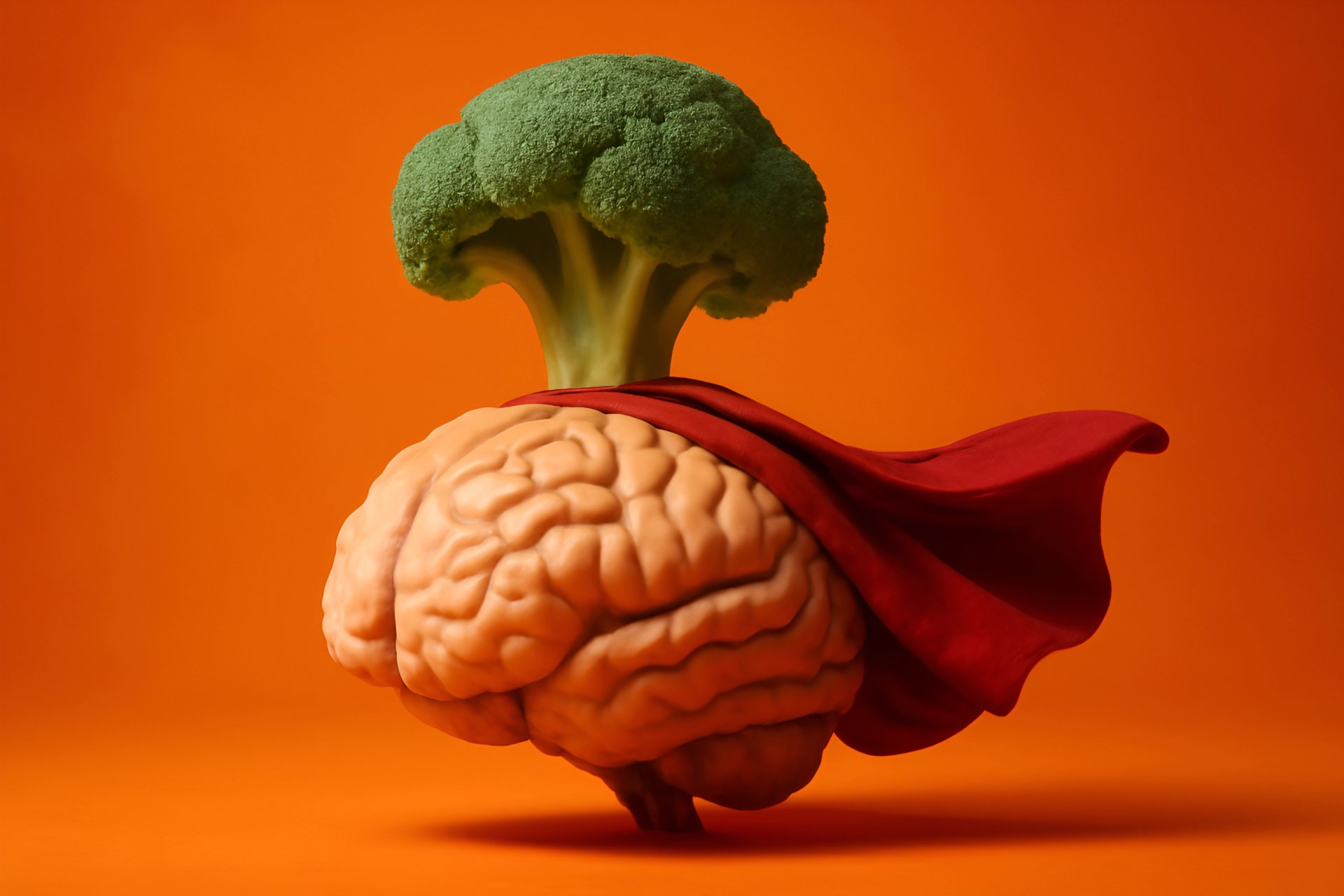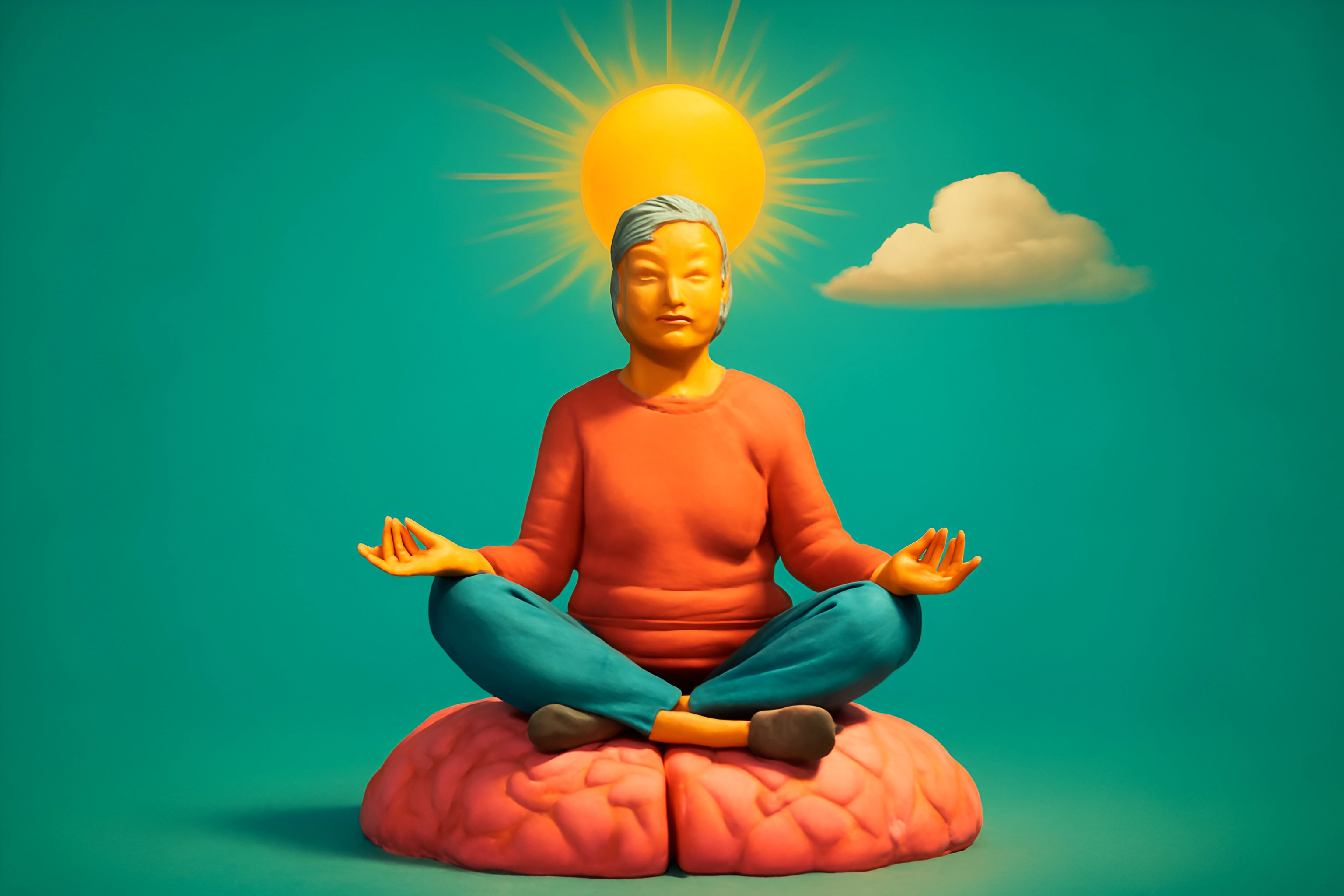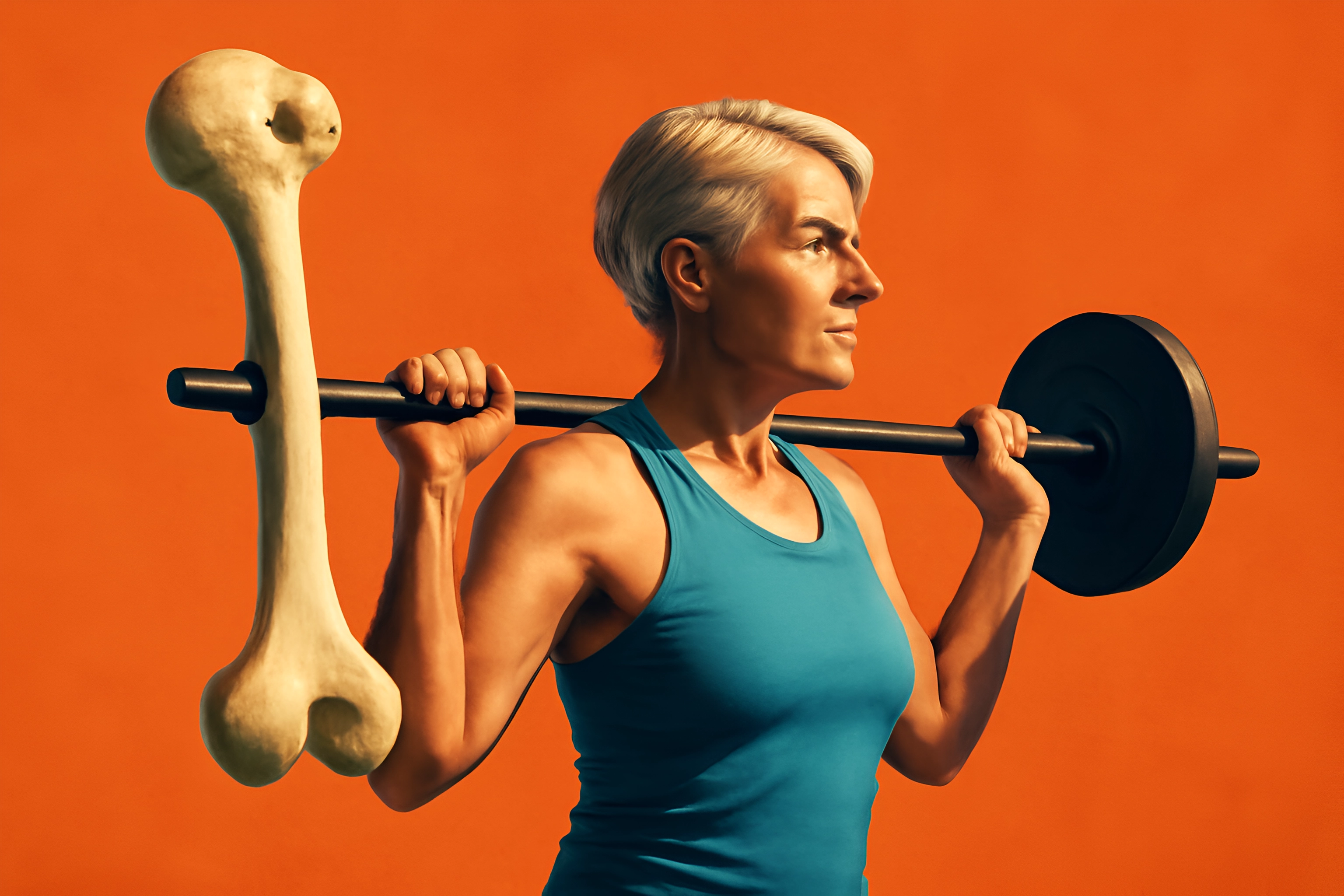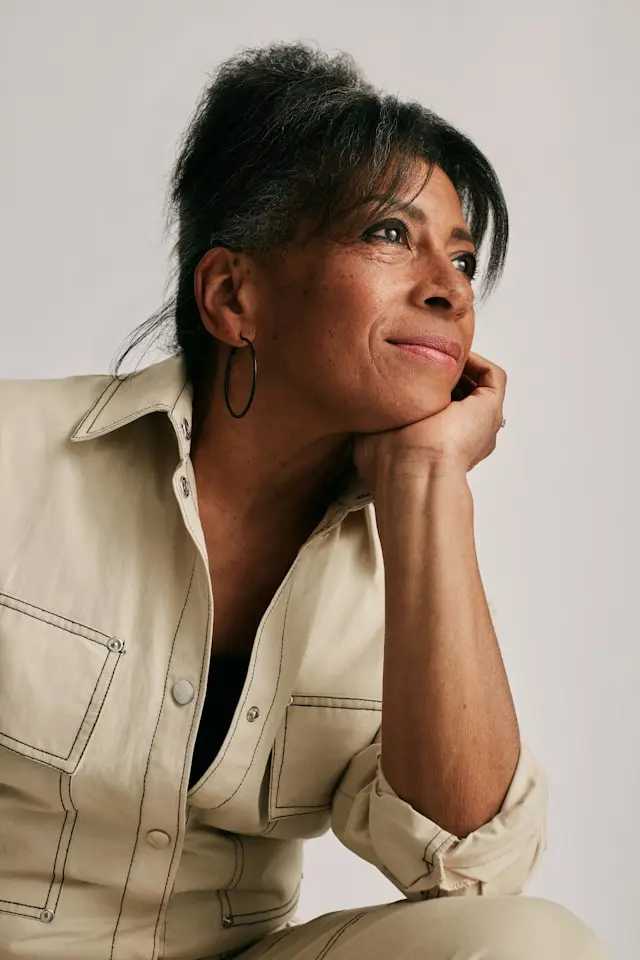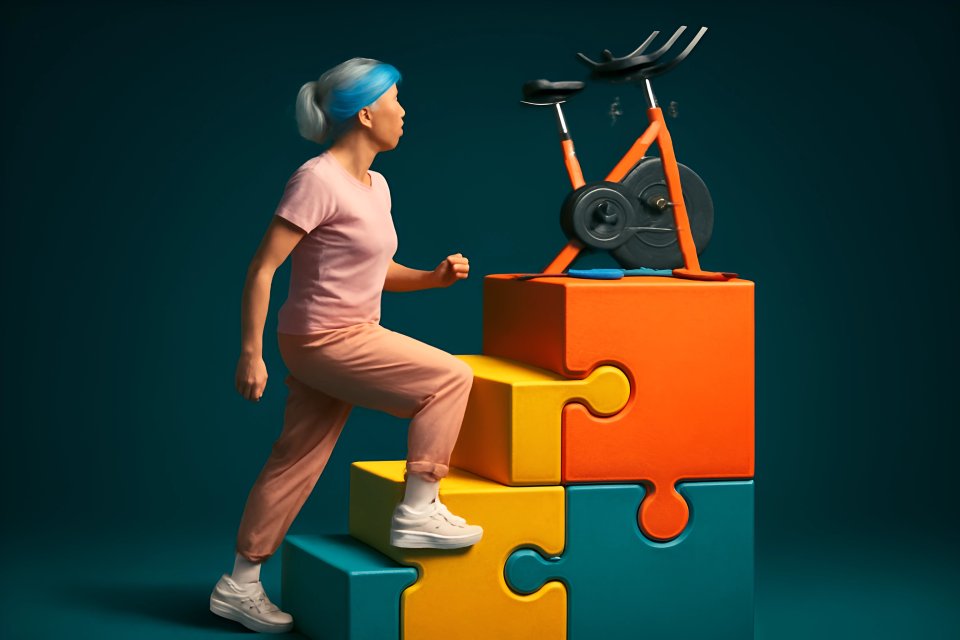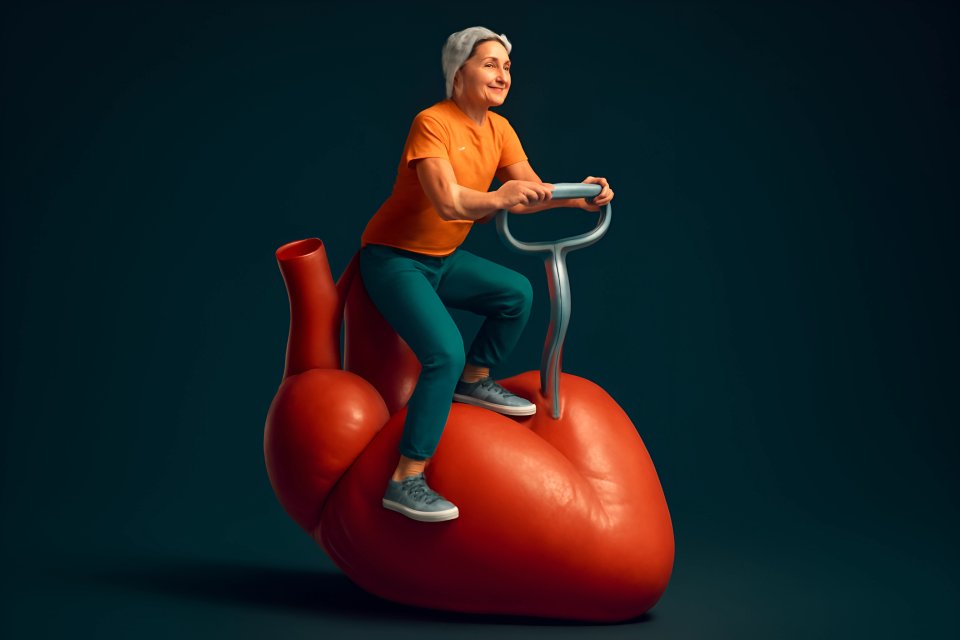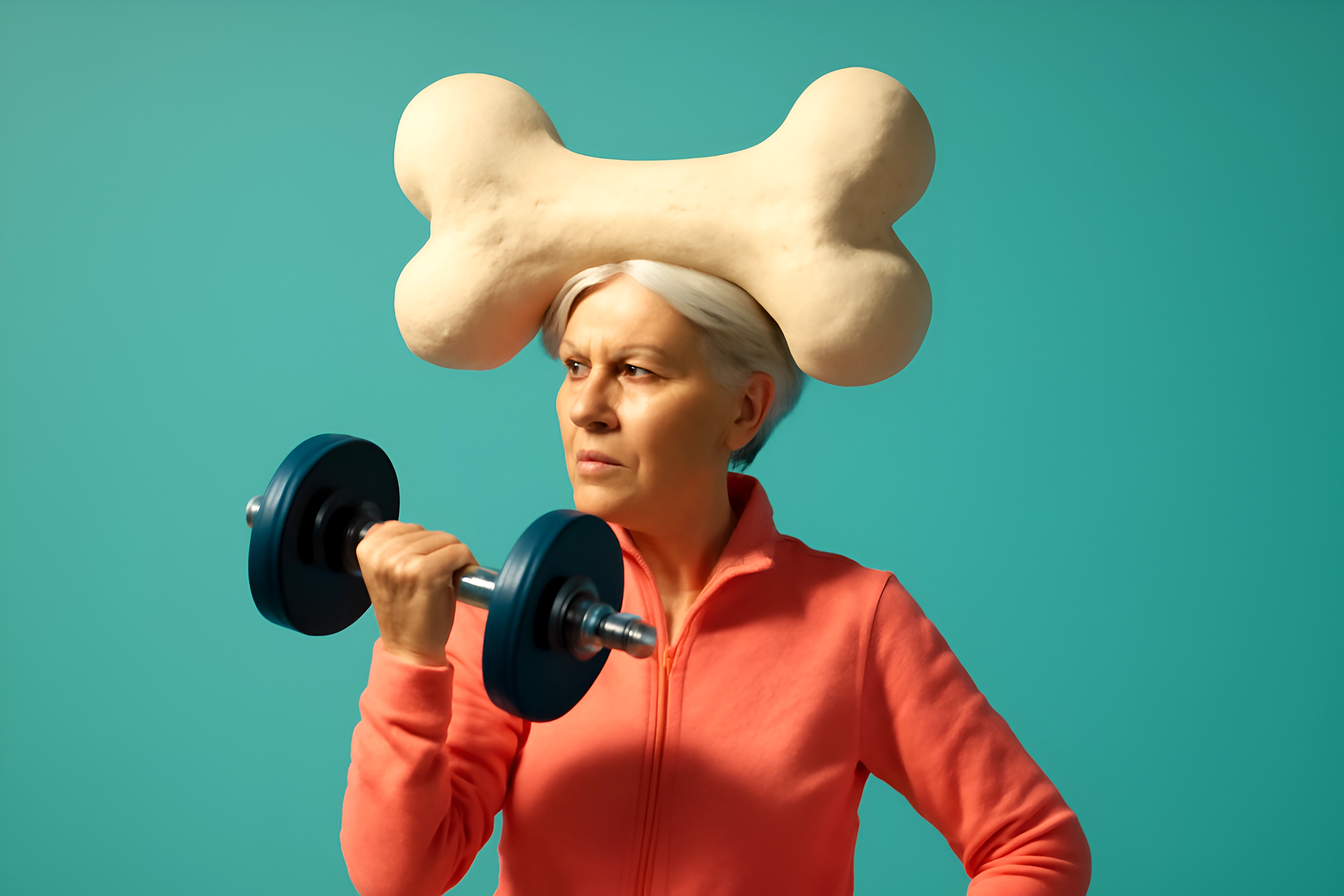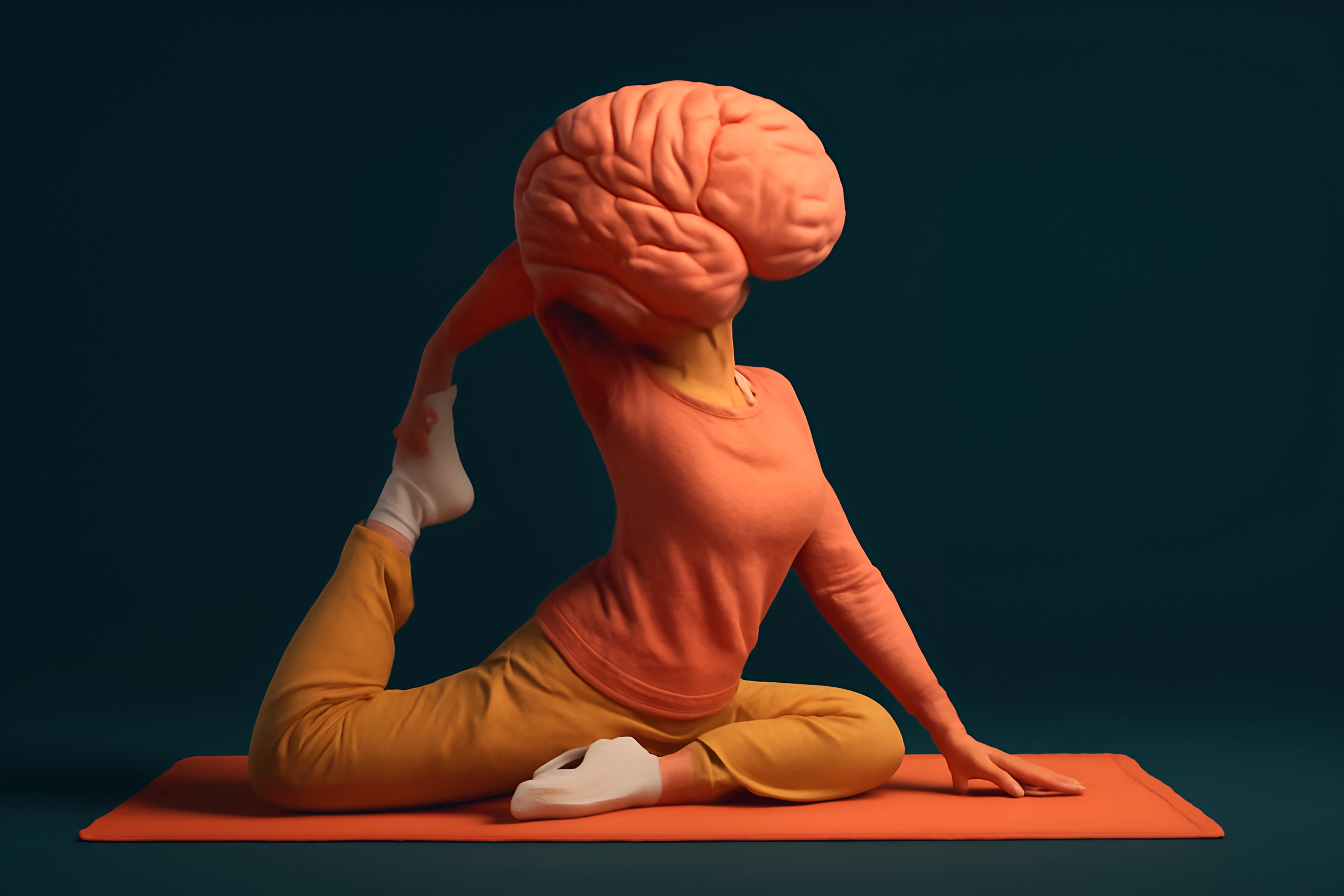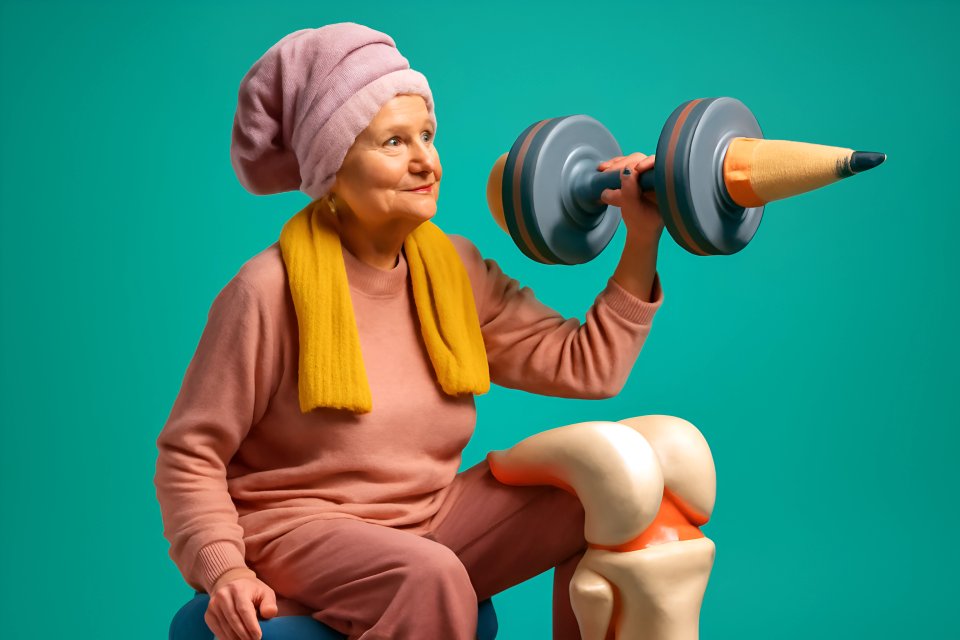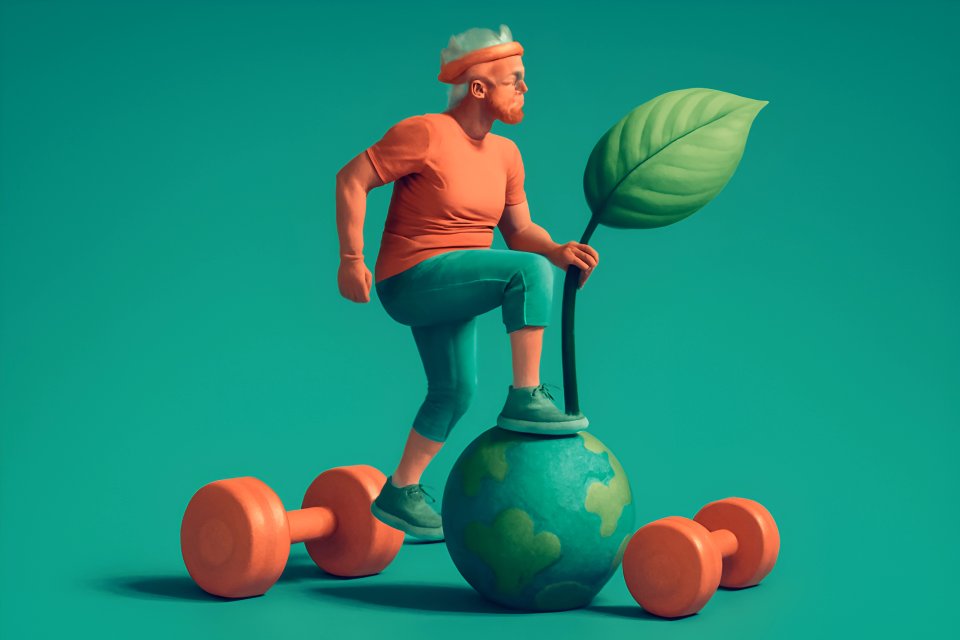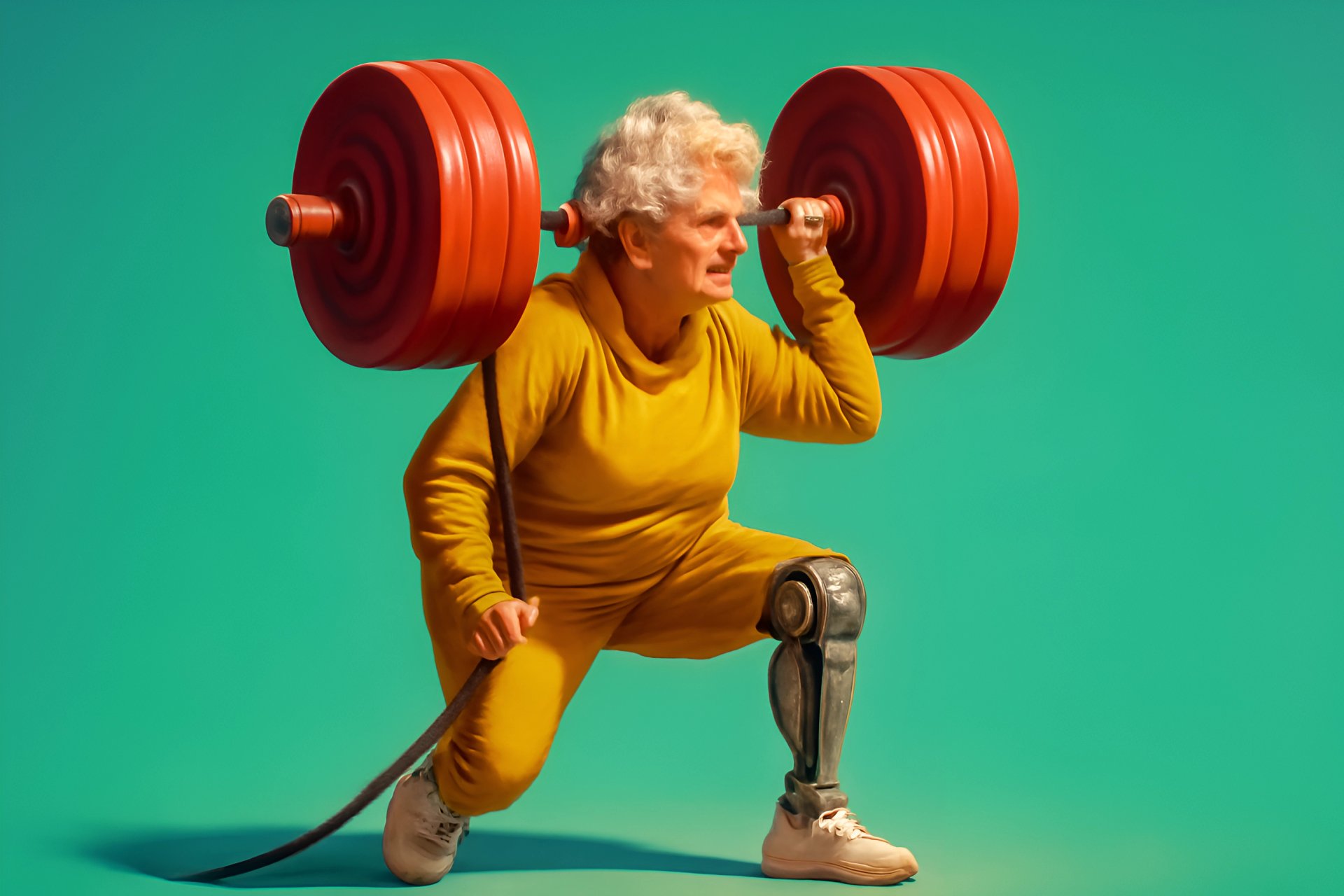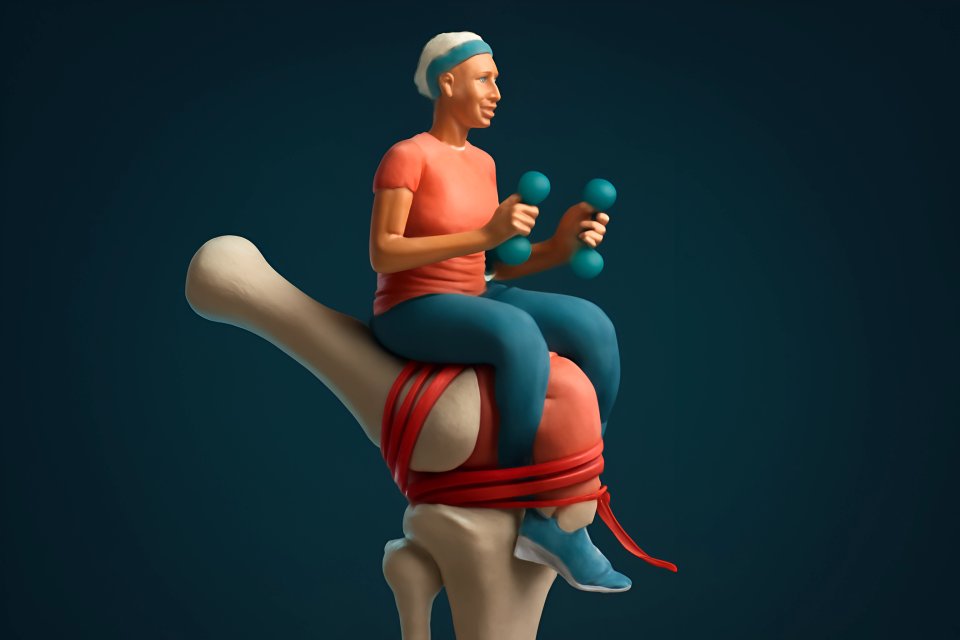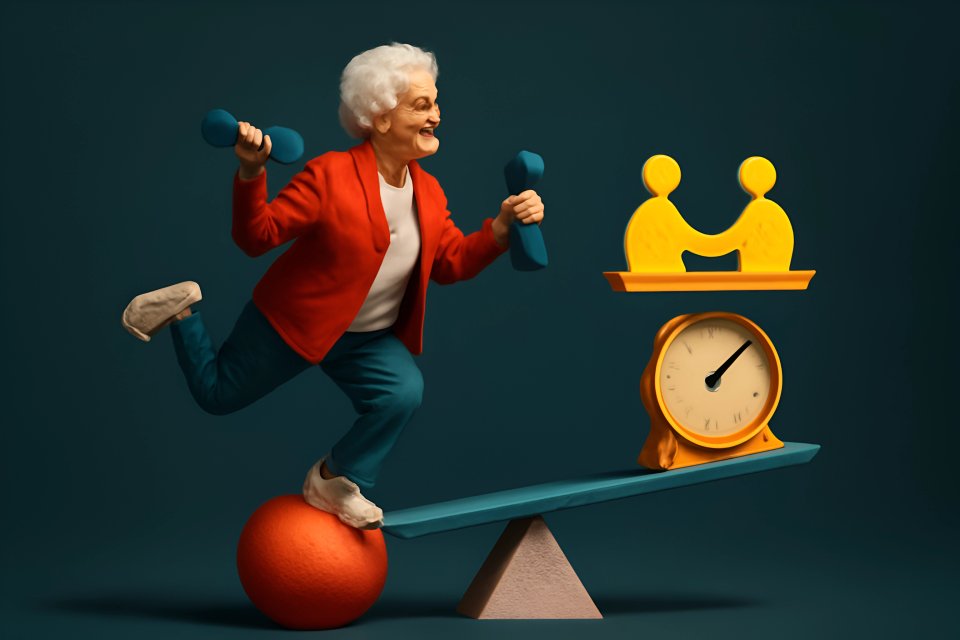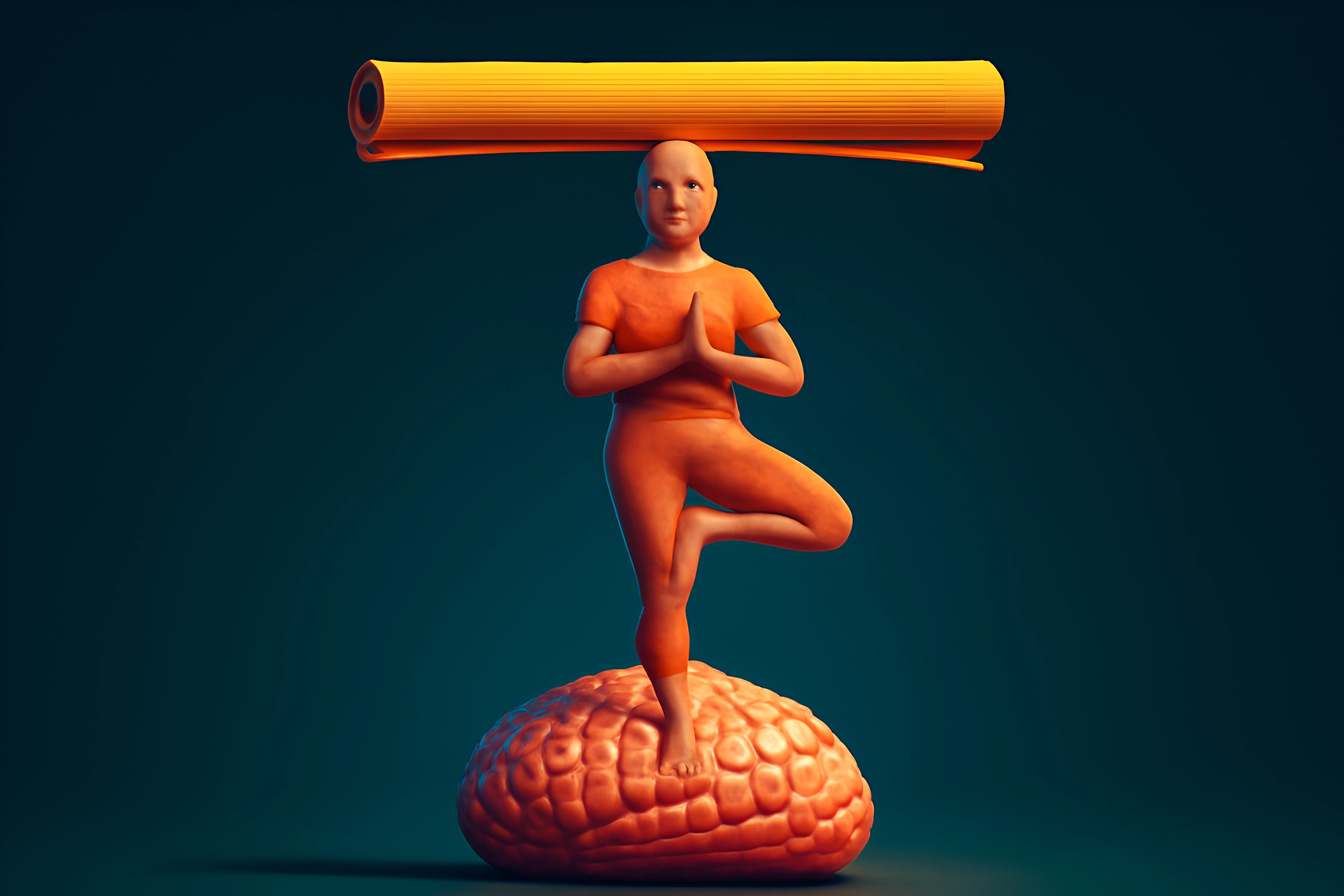
Do you ever feel like your joints are sending you a morning memo, complete with aches and stiffness? Or that the stresses of daily life are settling a little deeper into your shoulders, refusing to budge? It’s a feeling many of us know all too well, a quiet signal from our bodies that it’s time for a new approach to wellness.
This isn’t about decline; it’s about evolution. It’s about finding smarter, gentler ways to nurture the body and calm the mind. Forget the images of impossibly flexible yogis twisted into pretzels. The real power of yoga, especially after 50, lies in its profound mind-body connection—a practice designed to make you feel better, not just look a certain way.
In this guide, we'll explore how to begin a safe and effective yoga practice to boost your mobility, improve your balance, and find lasting stress relief. We’ll cover the key benefits, gentle poses you can start today, and tips for making it a sustainable part of your life. Let's dive into how yoga for enhanced mobility and stress relief after 50 can become your new favorite wellness habit.
The Dual Power of Yoga: Why It’s a Game-Changer After 50
Yoga isn't just stretching. It's a powerful, two-for-one system that addresses both the physical creaks and the mental clutter that can accumulate over time. It’s a direct investment in your long-term vitality, giving you the tools to move with more freedom and live with less tension.
Boosting Mobility and Flexibility, One Gentle Pose at a Time
As we age, our bodies naturally tend toward stiffness, but this is not a life sentence. Gentle, consistent movement is the antidote, and yoga is one of the most effective forms. Each pose works to lubricate your joints—especially the hips, shoulders, and spine—and gently lengthen the muscles that support them. This isn't about forcing anything; it's about coaxing your body back to its natural state of ease.
The benefits are incredibly practical. An increased range of motion makes daily activities like reaching for something on a high shelf, bending down to tie your shoes, or gardening feel significantly easier and less strenuous. Furthermore, as highlighted in guides on how yoga and meditation can improve senior mobility, the practice is crucial for enhancing balance and stability. By building functional strength using your own body weight, you create a more stable foundation, which is essential for preventing falls and moving through the world with confidence.
This focus on functional fitness is what makes senior yoga for balance and flexibility so transformative. It’s not about abstract exercises; it’s about strengthening your body for the demands of real life. For a comprehensive approach, you can explore how to build a complete low-impact exercise routine over 50 that incorporates these principles for total-body wellness.
Finding Calm: How Yoga Soothes the Mind and Nervous System
Have you ever noticed that when you’re stressed, your breathing becomes shallow and your shoulders creep up toward your ears? Yoga directly counteracts this physical stress response. The practice teaches you to connect with your breath—a technique known as pranayama—which sends a powerful signal to your nervous system that it’s time to relax.
This mindful breathing has been shown to reduce cortisol, the body's primary stress hormone, creating a sense of calm that permeates your entire being. As experts at Friendship Centers note, senior yoga fosters relaxation and peace, which helps manage chronic conditions and promotes healthy aging. By focusing on the physical sensations of each pose and the rhythm of your breath, you train your mind to stay in the present moment, reducing the power of anxious, looping thoughts.
The result is a powerful mental escape and a toolkit for resilience. This improved mental state often leads to better, more restorative sleep, giving your body and mind the chance to truly recover. This is the essence of yoga for stress relief over 50—it provides a dedicated time for you, free from the pressures of the outside world. To explore this further, our guide on integrative approaches for stress-free living offers a broader strategy for well-being.
Your First Steps on the Mat: 5 Gentle Poses to Begin Today
Getting started with yoga is simpler than you think. You don’t need fancy gear or a flexible body; you just need a willingness to listen to your body and a few square feet of space. This is your practice, on your terms.
Before You Begin: Safety is Your First and Most Important Pose
Before you attempt a single pose, embrace this golden rule: Listen to your body. You are looking for a gentle stretch, not pain. If something hurts, back off immediately. It’s also wise to speak with your doctor before beginning any new exercise regimen, especially if you have pre-existing conditions like osteoporosis, high blood pressure, or joint issues.
Finally, think of props as your best friends. Props like chairs, blocks, and blankets are not signs of weakness; they are smart tools for support and alignment. As experts on chair yoga for seniors explain, using a chair can make yoga accessible and safe for almost anyone, allowing you to reap the benefits without strain. If you're managing specific limitations, our guide on gentle workout modifications for seniors recovering from injury can provide additional support.
5 Foundational Poses for Mobility & Calm
Here are five simple, effective poses to begin your journey. Move slowly, breathe deeply, and focus on how each movement feels in your body.
Cat-Cow Stretch (Marjaryasana/Bitilasana)
- Primary Benefits: This gentle movement is fantastic for improving spinal flexibility and relieving tension in the back and neck. It also gently engages the core muscles.
- Instructions: Start on your hands and knees with your wrists under your shoulders and knees under your hips. As you inhale, drop your belly, lift your chest and tailbone, and look forward (Cow Pose). As you exhale, round your spine toward the ceiling, tuck your chin to your chest, and press the floor away (Cat Pose). Flow between these two movements for 5-10 breaths.
- Modification Tip: This can be done while seated in a chair. Place your hands on your knees and follow the same spinal movements with your breath.
Mountain Pose (Tadasana)
- Primary Benefits: The foundation of all standing poses,
Mountain Poseimproves posture, grounding, and body awareness, which are key for better balance. - Instructions: Stand with your feet hip-width apart, distributing your weight evenly. Gently engage your thigh muscles, lengthen your tailbone toward the floor, and lift your chest. Relax your shoulders down and back, and let your arms rest by your sides with palms facing forward. Breathe deeply for 5-8 breaths.
- Modification Tip: Stand with your back against a wall for extra support and to help you feel proper alignment.
Chair Pose (Utkatasana) - Modified
- Primary Benefits: This pose builds strength in the legs, core, and back, all while being supported by a sturdy chair.
- Instructions: Stand in front of a chair as if you are about to sit down. Inhale and raise your arms overhead. Exhale and bend your knees, lowering your hips until they just hover over the chair seat. Hold for 3-5 breaths, then press through your feet to stand back up.
- Modification Tip: The chair is the modification! You can also hold onto the back of the chair for additional balance support.
Bridge Pose (Setu Bandhasana)
- Primary Benefits: An excellent pose for strengthening the glutes and back, opening the chest and shoulders, and providing a gentle stretch for the spine.
- Instructions: Lie on your back with your knees bent and feet flat on the floor, hip-width apart. Place your arms alongside your body, palms down. On an exhale, press through your feet and lift your hips off the floor. Hold for 5-8 breaths, then slowly lower back down.
- Modification Tip: Place a yoga block or firm cushion under your sacrum (the flat part of your lower back) for a supported, more restorative version of the pose.
Legs-Up-the-Wall Pose (Viparita Karani)
- Primary Benefits: This is the ultimate restorative pose. It helps improve circulation, soothes tired legs and feet, and calms the nervous system for deep relaxation.
- Instructions: Sit on the floor with one hip against a wall. Gently swing your legs up the wall as you lie back, so your body forms an 'L' shape. Your sitting bones should be as close to the wall as is comfortable. Rest your arms by your sides and stay here for 5-10 minutes, breathing deeply.
- Modification Tip: Place a folded blanket or bolster under your hips to elevate them slightly for a deeper sense of release.
Creating a Sustainable Practice: Weaving Yoga into Your Life
The goal isn't a single, perfect yoga session. It's about creating a lasting habit that supports your well-being for years to come. The key is to make it accessible, enjoyable, and consistent.
How Often Should I Practice?
Forget the "all or nothing" mindset. When you're starting out, consistency is far more important than intensity or duration. Aim for just 10-15 minutes, three times a week. This small commitment is easy to stick with and allows your body to adapt gradually, making it a sustainable part of your routine.
As you feel more comfortable, you can slowly increase the length or frequency of your sessions. Remember, even a few minutes of mindful movement is a victory. This approach is central to all mind-body yoga for older adults and is a core principle in our guide to mastering sustainable low-impact workouts for seniors.
Beyond the Poses: The Simple Power of Mindful Breathing
You don't need a yoga mat to practice one of yoga's most powerful tools: your breath. A simple technique called "Belly Breathing" (Diaphragmatic Breathing) can be done anywhere, anytime, to instantly reduce stress. Simply place one hand on your belly, and as you inhale through your nose, feel your belly expand. As you exhale slowly, feel it gently contract.
This simple act activates the body's relaxation response and is a cornerstone of stress management. For a deeper exploration of these techniques, our post on deep breathing and meditation for stress management is a perfect companion to your physical practice.
Finding Your Community: At Home or in a Class
Practicing yoga can be a solo journey or a shared experience. Many local community centers and gyms offer "gentle yoga" or "senior yoga" classes, which can be a wonderful way to get expert guidance and connect with others. Look for instructors who emphasize safety and modifications.
If you prefer the comfort of your own home, there are countless high-quality online resources available. Search for instructors who specialize in yoga for older adults to ensure the pacing and poses are appropriate. Building a comfortable home practice is empowering, and our guide on how to start adaptive home workouts can help you create the perfect setup.
Conclusion: Your Journey to Balance and Vitality Starts Now
Yoga is not a competition or a destination; it is a personal journey of rediscovery. It is a gentle, powerful, and infinitely adaptable tool that is perfectly suited to help you enhance your mobility, improve your balance, and manage the stresses of modern life after 50. It’s about honoring your body where it is today while investing in its strength and resilience for all your tomorrows.
Embrace the journey, not the destination. Every stretch, every deep breath is an investment in your long-term health and happiness. You have the power to feel more mobile, balanced, and peaceful, starting today.
Which pose are you most excited to try? Share your thoughts in the comments below!
For more tips on active and mindful aging, subscribe to the FitOverFifty newsletter.



